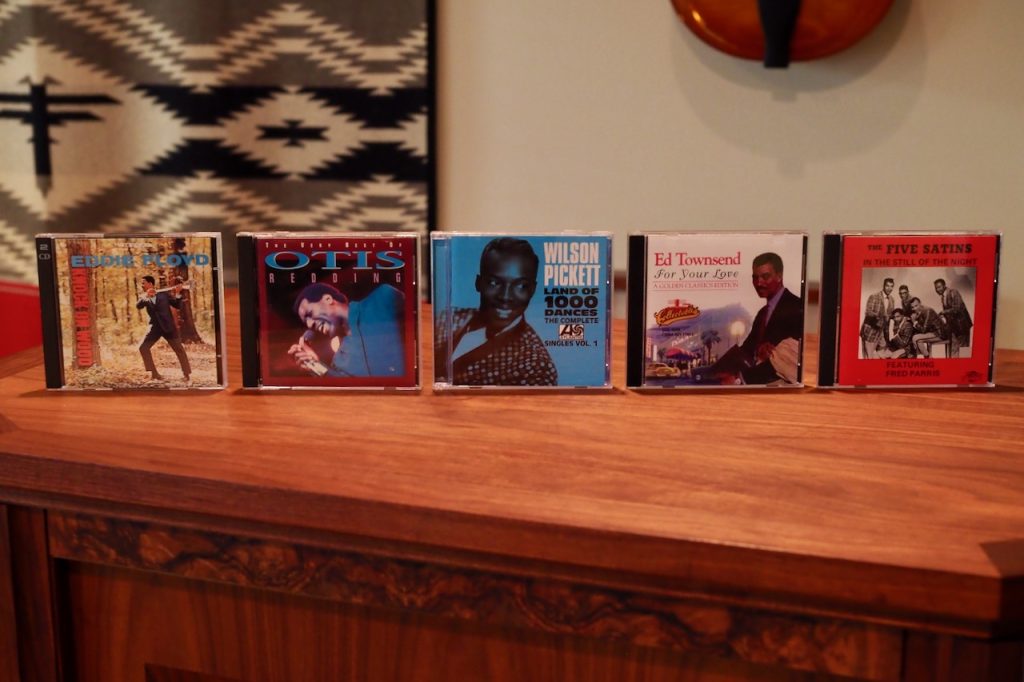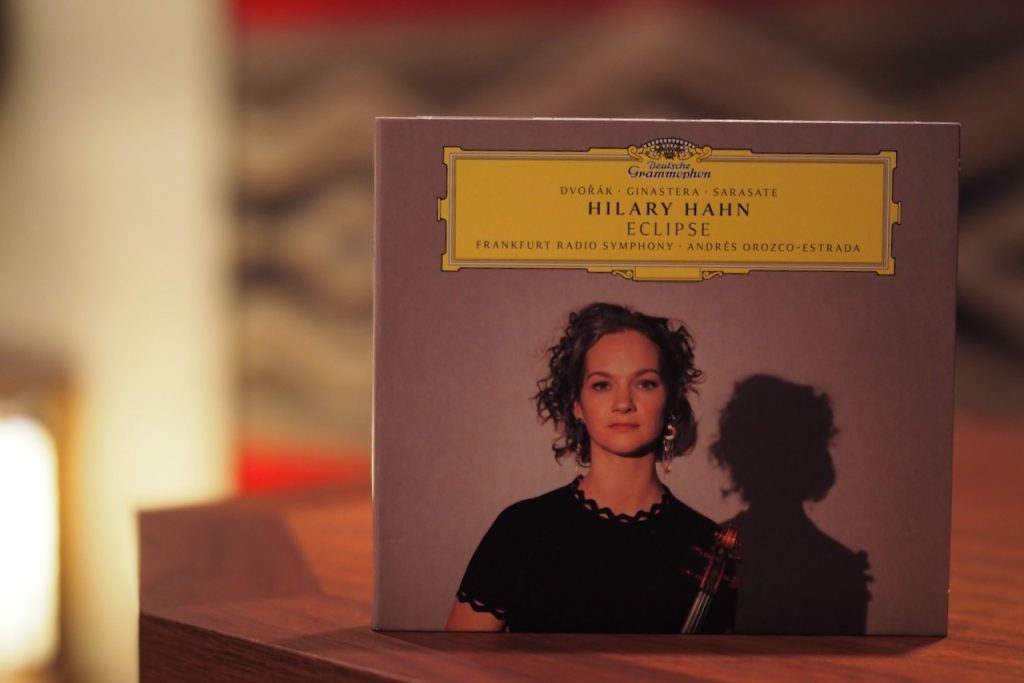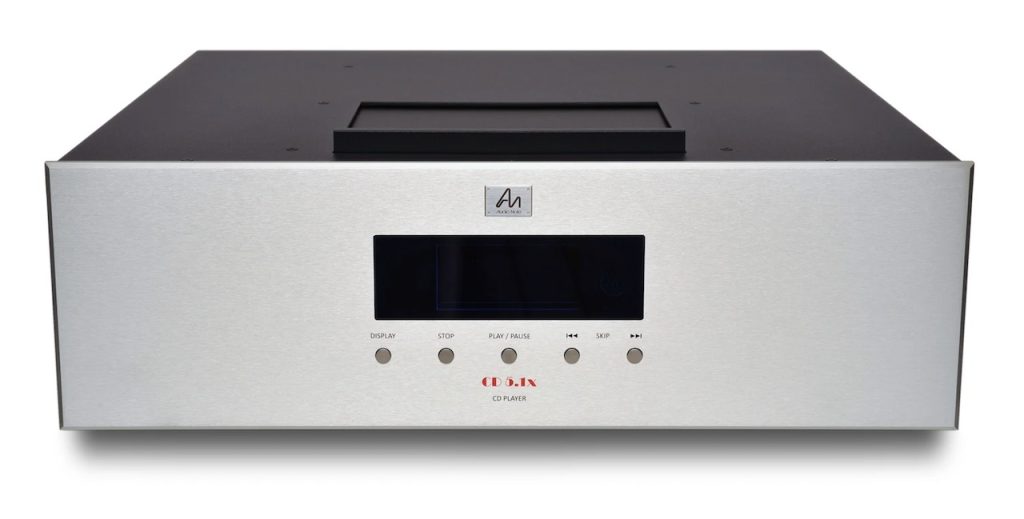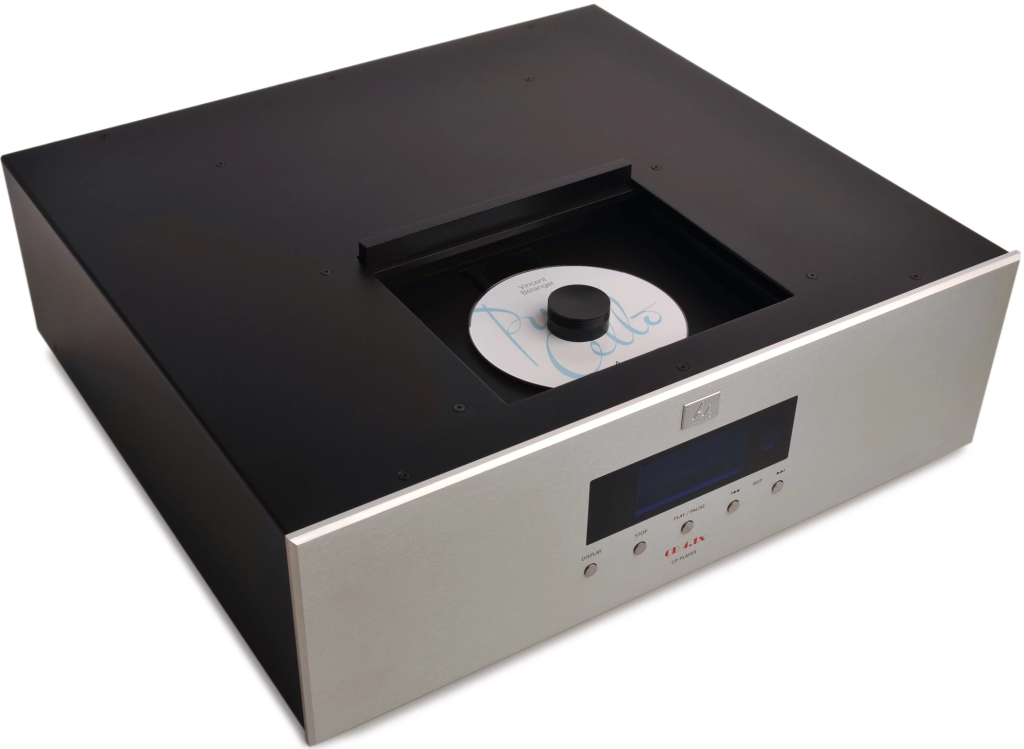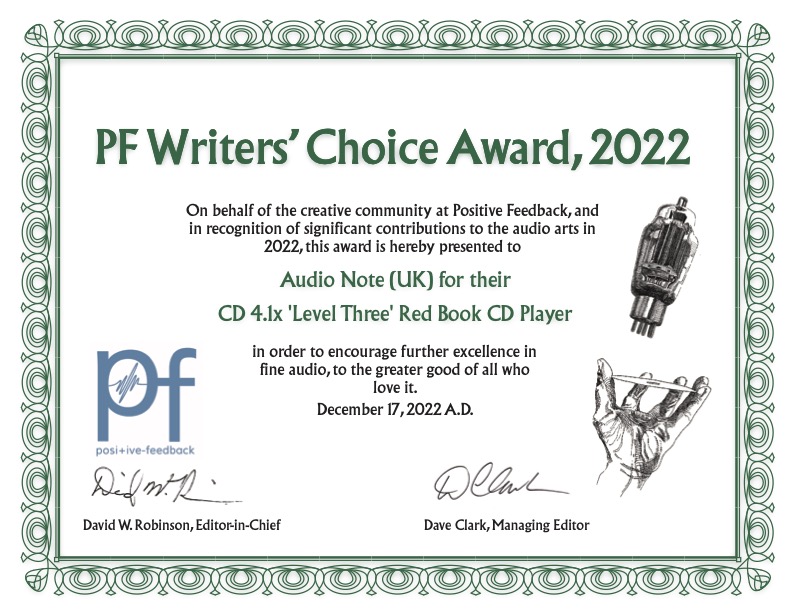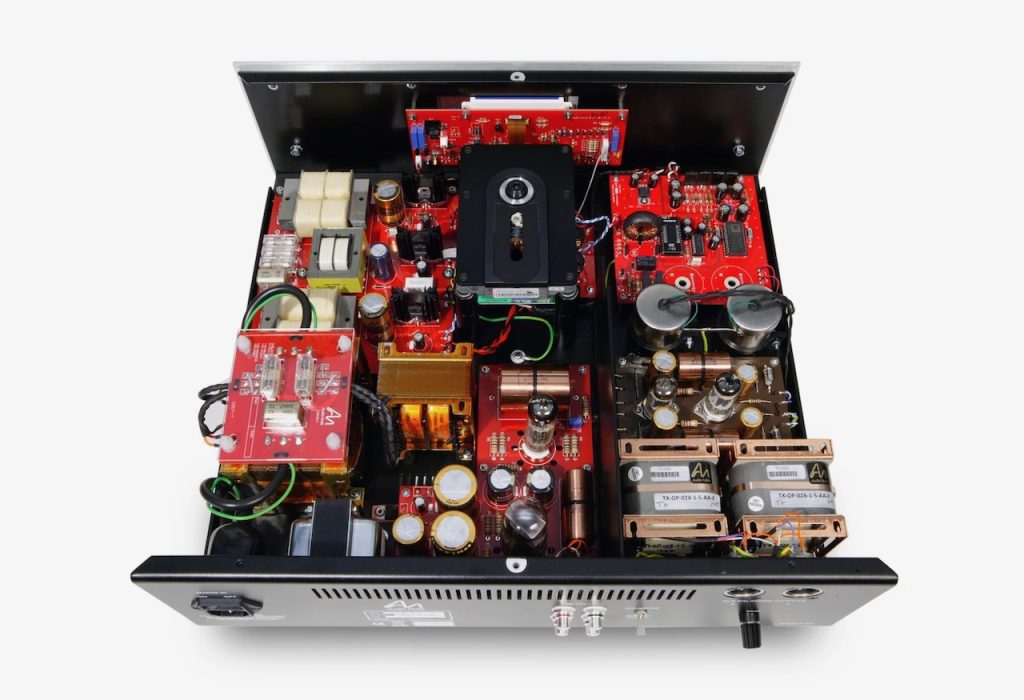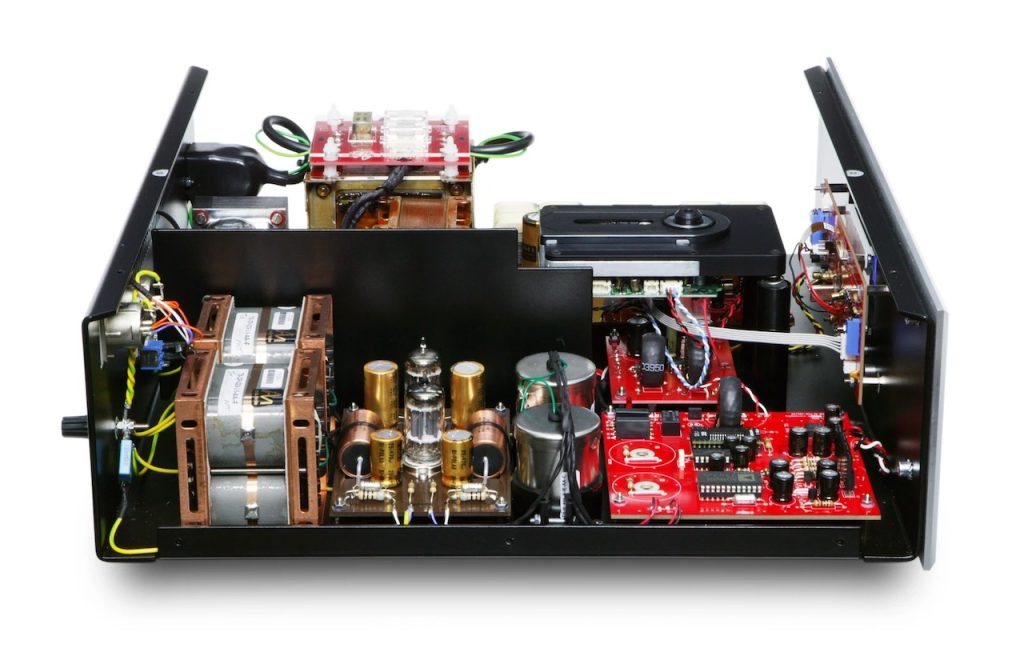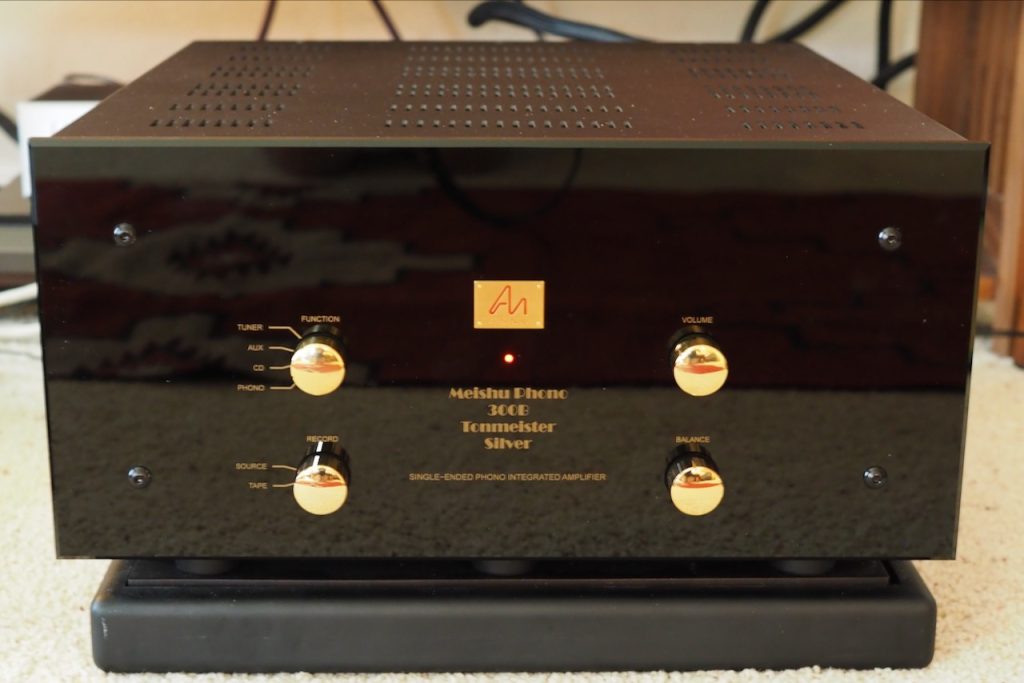Its no secret that the Audio Note (UK) Red Book CD players have challenged my perceptions of what a digital audio reality sounds like, with their analog-like presentation, superb musicality, and exemplary sound quality from Red Book CDs.
But that's only part of the Audio Note (UK) CD players allure for me, as where they really 'pulled the rabbit out of the hat' in my little corner of the world was by opening up the ability to listen to recorded musical performances from all the periods of our recorded music canon with just one source component.

My Tannoy Westminster Royal SE loudspeakers with the Audio Note (UK) CD 4.1x CD player and Meishu 300B integrated amplifier.
No longer was there a need to have multiple source setups to play acoustic & electric era recordings, with their myriad equalization requirements to hear them at their best, or have dedicated monaural and stereo moving-coil cartridges, tonearms, and phono stages optimized for the playback of magnetic era recordings on vinyl (which by the way, with top notch kit, adds up to more than even the price of the CD 5.1x).
There are an enormous amount of important recordings available now on CD from the acoustic era of recording (1877 to 1925), electric era (1925 to 1945), magnetic monaural era (1945 to 1957), magnetic stereo era (1957 to 1975), and digital era (1975 to present day).
Now, with one of these high-fidelity Audio Note (UK) CD players I can listen to the vast library of Planet Earth's great recorded musical performances at a level of fidelity that would have been unimaginable just a decade ago. and do that with only one high-fidelity source component.
No doubt that seismic shift in listening habits sounds strange coming from me, having been mostly focused on vinyl playback for the last six decades.
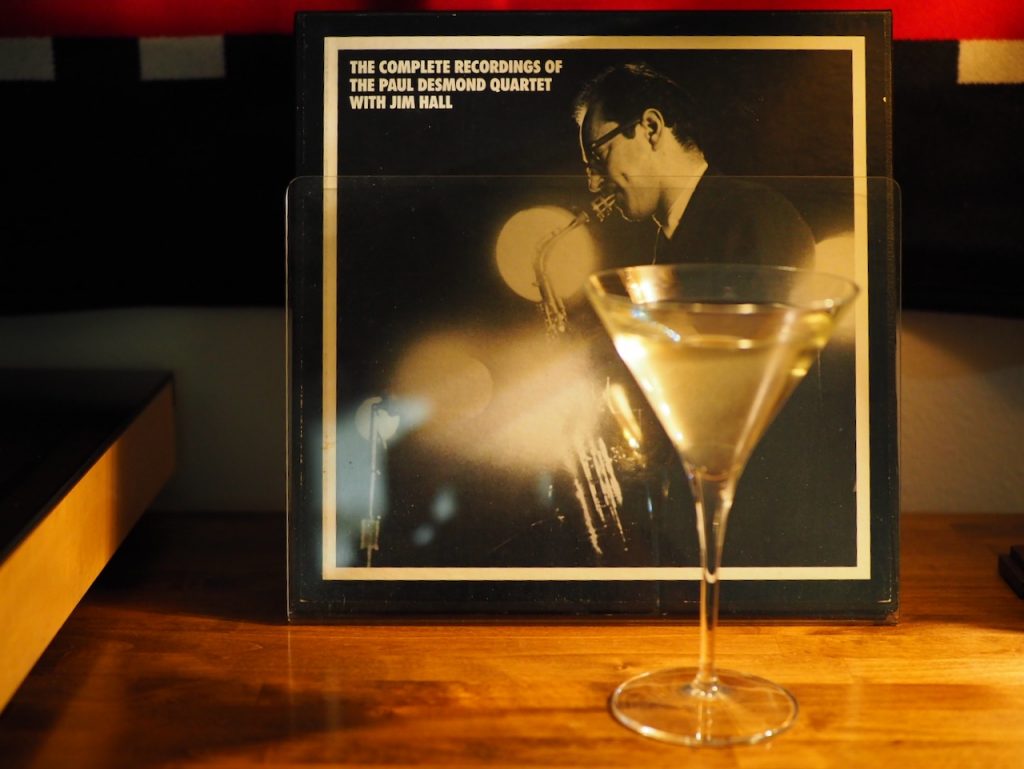
Stereo magnetic era recordings: "The Complete Recordings of the Paul Desmond Quartet with Jim Hall" CD box set from Mosaic.
Is digital superior to analog? Yes and no. Is analog superior to digital? Yes and no.
Classical music lovers - like the late and great J. Gordon Holt of Stereophile fame - might prefer CDs for their 90 dB dynamic range (vinyl is 55 to 70 dB), which means less dynamic compression (and the possibility for none), and their up to 80 minute playing time, which enables listening to a full concert uninterrupted (where vinyl is an interrupted 45 minutes over two sides).
There is also less surface noise from CDs than vinyl, and they don't wear after repeated playing like vinyl. A CD collection also takes up less space than a vinyl collection, so you can get a bigger music library into the same amount of space.
Vinyl aficionados will point out that the frequency range of vinyl is potentially 7 Hz to 50KHz (but more likely the lower end is 20 to 30 Hz), and vinyl high-frequencies handily exceeds that of CD (CDs top out at 22.5KHz). That potentially delivers more openness, more spaciousness, and more soundstage depth, for vinyl.
Recording engineers are saying that for recording purposes, the signal that goes from the microphone to the recorder, and the signal you get back from the recorder, is more accurate for digital than it is for analog.
They also say today's best digital transfers from analog master tapes are indistinguishable from each other in sound quality. They also say that masters transferred to CDs are much closer to the original master recordings than those transferred to LPs, which will typically require more dynamic compression.
Personally, I enjoy both digital and analog formats, and when each type of format is optimized during mastering specifically for a CD, or a vinyl record, you can bring the strengths of each type of media to the software, and the end result is that they are both very, very, high-fidelity, but perhaps just in slightly different ways.
It turns out that both analog and digital playback software (vinyl and CD) and playback components have evolved to a point where they can offer very high-fidelity presentations from recorded music.
Early CDs sounded pretty bad compared to the best magnetic era vinyl records, which drove us audiophiles crazy.
There's two primary reasons for that, with the first being that a master tape optimized for vinyl isn't optimum for the CD format. If you just transfer that optimized for vinyl master recording to CD it might not sound so good, and in fact its fairly likely it will not sound that good.
That's part of the reason why you see so many remastered albums these days, as those original session recordings likely needed to be optimized differently during the mastering process for CDs and vinyl.
If you transfer a recording mastered for use on CD that takes advantage of its wider dynamic range, its probably not going to work on vinyl, where it will need more dynamic compression.
Then there's the second major reason for early CDs sounding worse than the best vinyl records, and in my opinion probably the biggest reason: The design of early CD players weren't really able to extract the musical content from CDs very successfully, so they sounded flat, sterile, brittle, and just generally unpleasant in comparison to the best in vinyl playback.
That's all changed with excellent Red Book CD players like those from Audio Note (UK), which are CD players that can rival the vinyl listening experience with their analog-like presentation, superb musicality, and exemplary sound quality.
Take for example the $30,850 USD Audio Note (UK) 5.1x Red Book CD player that has just arrived here at Jeff's Place for review, which is Audio Note (UK)'s all out assault on what is possible to achieve in high-fidelity performance from a one-box CD player.
I was blown away by how good the $14,331 USD Audio Note (UK) 4.1x Red Book CD player was in high-fidelity terms, so I awarded it one of my three Positive Feedback Writers' Choice Awards for 2022, but how does the $30,850 USD CD 5.1x compare to the $14,331 USD CD 4.1x?
Both the CD 4.1x and CD 5.1x look the same on the exterior, but inside they are very different, so I asked Darko Greguras - Audio Note (UK)'s digital design guru - if he could tell us about the differences between the two.
Here's what Darko had to say:
"In simple terms, the CD5.1x combines elements of the CDT Three CD transport and the digital section from the DAC4.1x Balanced, where CD4.1x is closer to a combination of the CDT Two/II CD transport and an upgraded DAC2.1x. So there is a very large difference between the two models, both in design and component choices."
"Our decision to go that far with a single chassis CD player meant the biggest technological and philosophical difference between any other two CD players in our range."
"On the CDT side of its design, the CD5.1x has an advantage by utilising an improved PSU for the motor section, combined with a more sophisticated dual differential SPDIF buffer. These important technical aspects help to ensure and preserve greater authenticity, a fuller presentation at the lower end of the spectrum and more subtle low-level information retrieval. Maintaining this level of nuance is critical at this stage, as that which is lost during this very first step (i.e. the source) will be lost forever."
"The differences in the DAC sections are even greater: the digital board is identical to the one found in the DAC5 Special, DAC5 Signature, and the Fifth Element. The AD1865 onboard discrete PSU is based on an ultra-low noise open loop shunt arrangement feeding the AD1865, followed with a pair of copper-copper I/V transformers wound in-house on larger cores. This is, technically, the heart of the conversion, and the design target was very clear; to retain the natural signal flow with an improved energy extraction thanks to the larger cores of these I/V transformers."
"The line stage is based on our M5 Line Preamplifier, so a ‘mini power amplifier’ arrangement around the ECC82 vacuum tube (or 5814A, as used here) and the juicy 5687, through a pair of 35:1 SHiB double C core step-down transformers, which are designed to provide the best dynamic transfer."
"This is a major upgrade over the CD4.1x’s SRPP ECC88 vacuum tube stage, and provides a far greater sense of power, grip (especially during a very quiet listening session), and low level signal retrieval. It also results in a dramatically reduced output impedance, typically < 10 Ohms."
"The HT regulator uses a combination of ECL82 and 6X5 vacuum tubes. This configuration stores less energy in the HT capacitors, which results in far closer signal tracing compared with the more traditional, passive arrangement in the CD4.1x. It is a classic, robust, trustworthy, and elegant design."
Thanks to Darko for telling us about the design of the CD 5.1x compared to the CD 4.1x.
If you look at the Audio Note (UK) website for the CD 5.1x, there's a few other details of interest:
"(The CD 5.1x is a) Level Three Red Book CD Player. The CD 5.1x is a completely new machine which elevates the one-box CD player to hitherto unknown levels of performance. Never before has it been possible to achieve such quite astonishingly superior levels of digital replay from a single chassis, integrated design."
"The CD 5.1x features the top-loading Philips CD Pro 2LF CD mechanism, which we custom modify and improve in-house, bringing the performance of this already excellent mechanism up to a standard that is truly in a class of its own."
"The power supply is a valve rectified and regulated design, using a 6X5 and ECL82."
"The analogue output stage uses a combination of 1 x 5814a and 1 x 5687WB valves, feeding a pair of our world-renowned output transformers, using SHiB cores with copper primaries and secondaries."
"A mix of our own 0.5 watt and 1 watt non-magnetic Tantalum resistors are used in all critical areas, as are our own custom Audio Note (UK) foil / Mylar and electrolytic capacitors."
"The CD 5.1x uses our own in-house designed and manufactured digital transformers; silver wound for the transport side, and copper wound for the DAC side."
A quick perusal of the CD 5.1 owner's manual reveals some other interesting details.
Take a look at the back of the CD 5.1x, where you can see two pairs of RCA outputs at 1.2V for use with hi-fi kit that has RCA inputs, and one pair of balanced XLR connectors with 2.4V output for those owners with balanced connections on their preamp, or for pro use with components that use balanced XLR connectors.
The owner of a CD 5.1x also has the option of running an interconnect terminated on the CD 5.1x end with XLRs, and on the preamp-amp end with RCAs, which will deliver 2.4V. This can be a handy 'nitro-boost' choice for those with flea-power amplifiers like my 2 watt 45 SET.
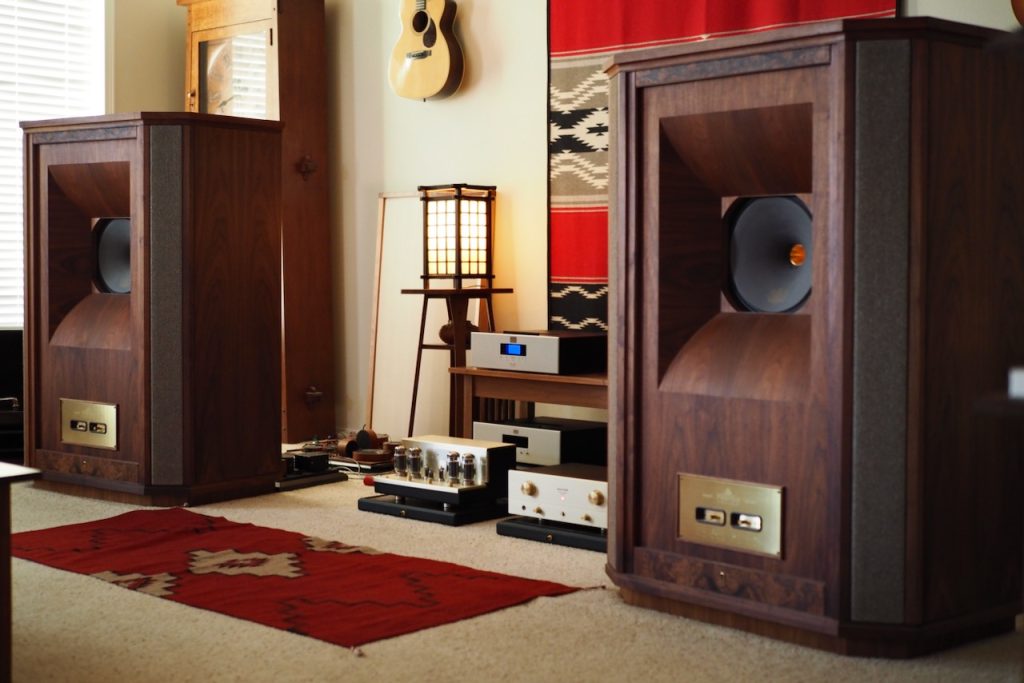
Audio Note (UK) CD 4.1x and CD 5.1x & Io I MC + AN-S4 SUT, for digital and analog sources with the Mactone XX-440 pre and MH-120 amp that is in for review.
I'll have a lot more to tell you about the CD 5.1x in the future as I get some more listening time in, but let me say this: the CD 5.1x blew me away last night listening to "The Alternate Blues", featuring Oscar Peterson (piano), Dizzy Gillespie (trumpet), Clark Terry (trumpet, flugelhorn), Freddie Hubbard (trumpet, flugelhorn), Joe Pass (guitar), Ray Brown (bass), and Bobby Durham (drums).
Just really superb in every way.
Right now I'm working on the feature review for Positive Feedback of the Mactone XX-440 line preamplifier and MH-120 stereo amp, and have been listening to both the CD 4.1x and CD 5.1x with that pairing, as well as Audio Note (UK) Io I MC phonograph cartridge and silver AN-S4 step-up transformer for vinyl.
After I finish up the Mactone review I'll put the Audio Note (UK) Meishu Phono Silver Tonmeister 300B single-ended-triode integrated amplifier back in the system to pair with the CD 5.1x & 4.1x, and the Io I MC + AN-S4 SUT for more listening.
Much more to come about the Audio Note (UK) CD 5.1x, so stay tuned!
Previous articles about the Audio Note (UK) CD 5.1x Red Book CD player:
Today's Fresh Catch: The Audio Note (UK) CD 5.1x Red Book CD player! HERE
First Listen: Audio Note (UK) CD 5.1x Red Book CD player! HERE
As always, thanks for stopping by, and may the tone be with you!






